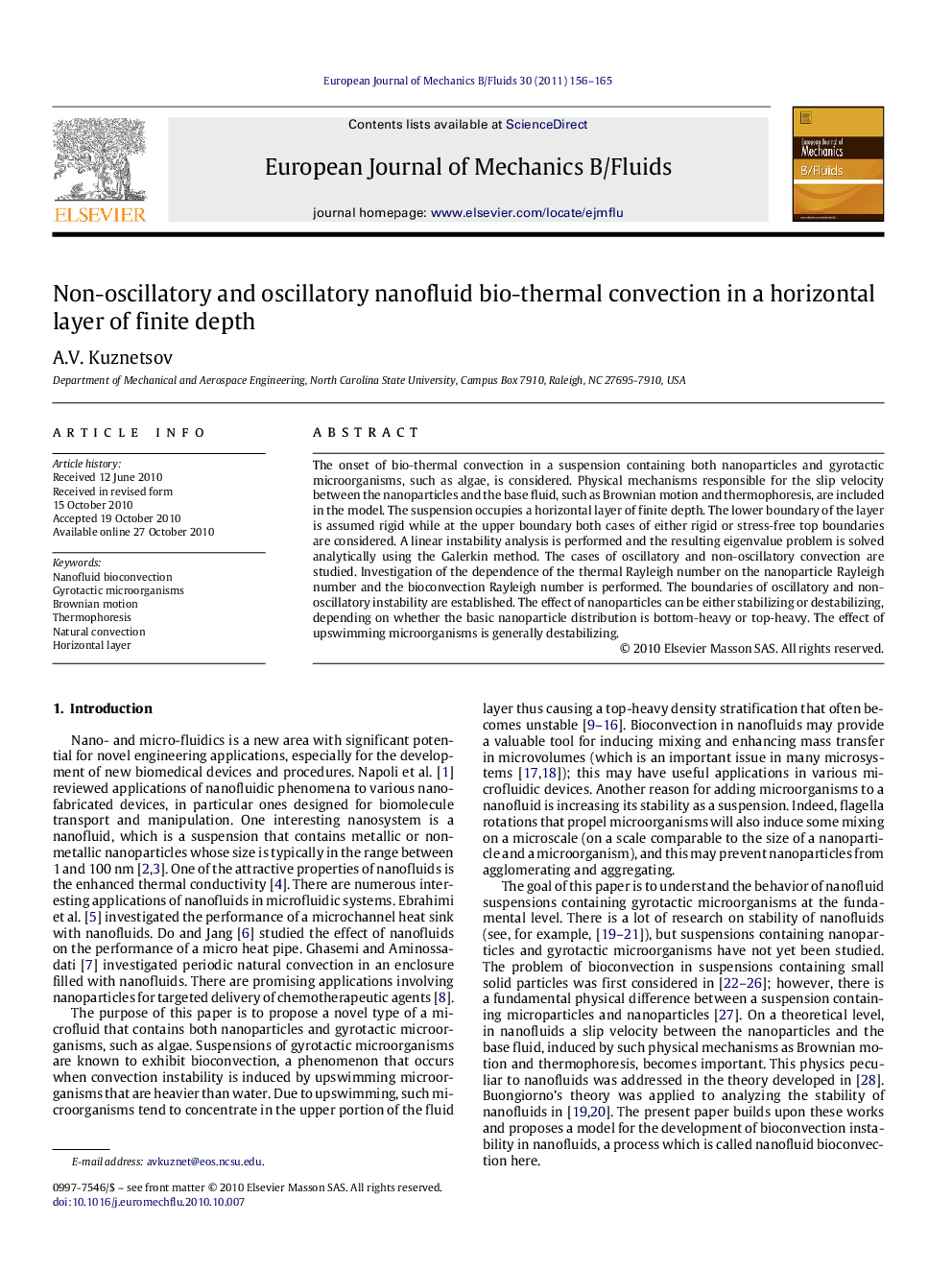| Article ID | Journal | Published Year | Pages | File Type |
|---|---|---|---|---|
| 650627 | European Journal of Mechanics - B/Fluids | 2011 | 10 Pages |
The onset of bio-thermal convection in a suspension containing both nanoparticles and gyrotactic microorganisms, such as algae, is considered. Physical mechanisms responsible for the slip velocity between the nanoparticles and the base fluid, such as Brownian motion and thermophoresis, are included in the model. The suspension occupies a horizontal layer of finite depth. The lower boundary of the layer is assumed rigid while at the upper boundary both cases of either rigid or stress-free top boundaries are considered. A linear instability analysis is performed and the resulting eigenvalue problem is solved analytically using the Galerkin method. The cases of oscillatory and non-oscillatory convection are studied. Investigation of the dependence of the thermal Rayleigh number on the nanoparticle Rayleigh number and the bioconvection Rayleigh number is performed. The boundaries of oscillatory and non-oscillatory instability are established. The effect of nanoparticles can be either stabilizing or destabilizing, depending on whether the basic nanoparticle distribution is bottom-heavy or top-heavy. The effect of upswimming microorganisms is generally destabilizing.
